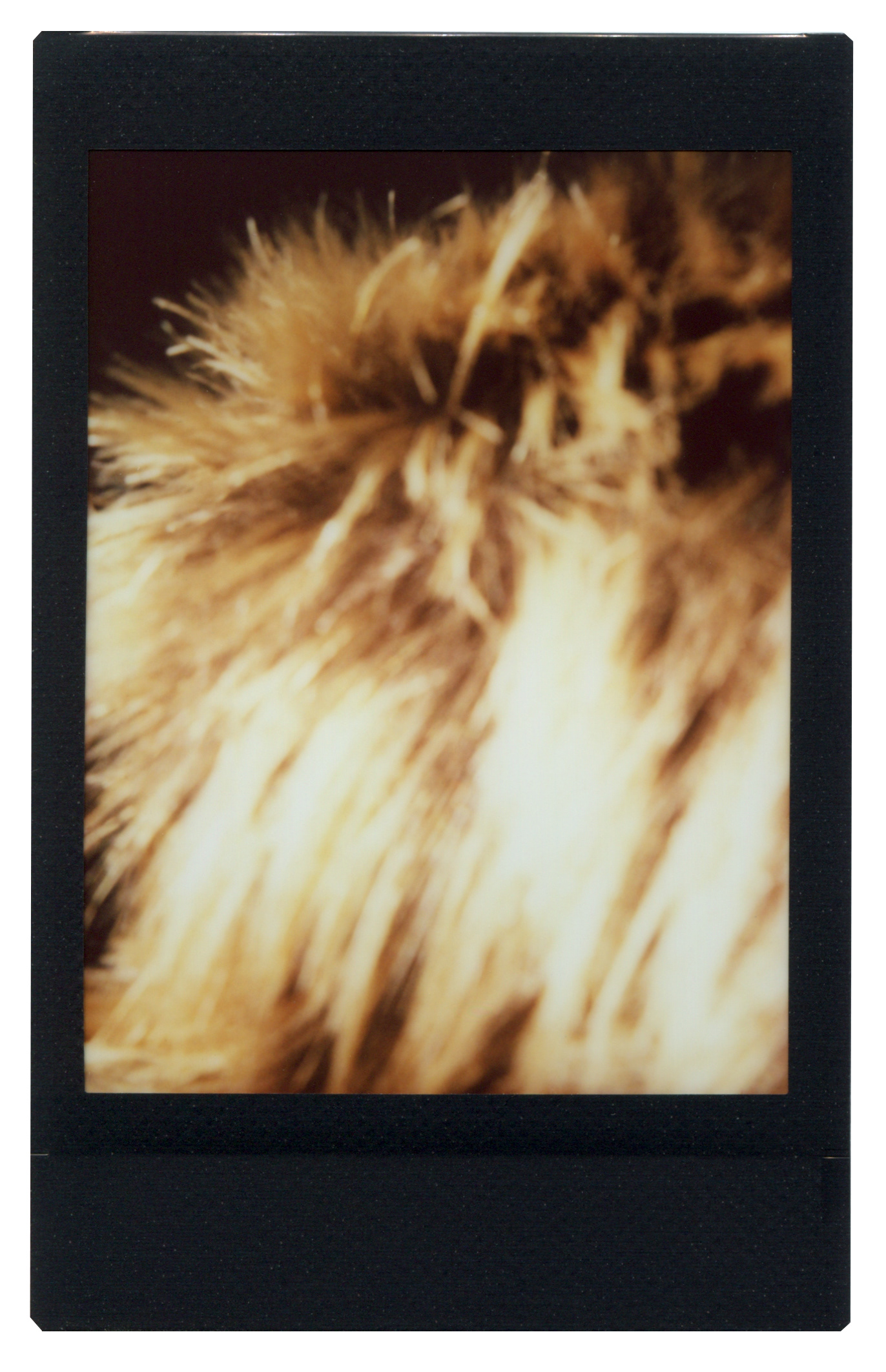

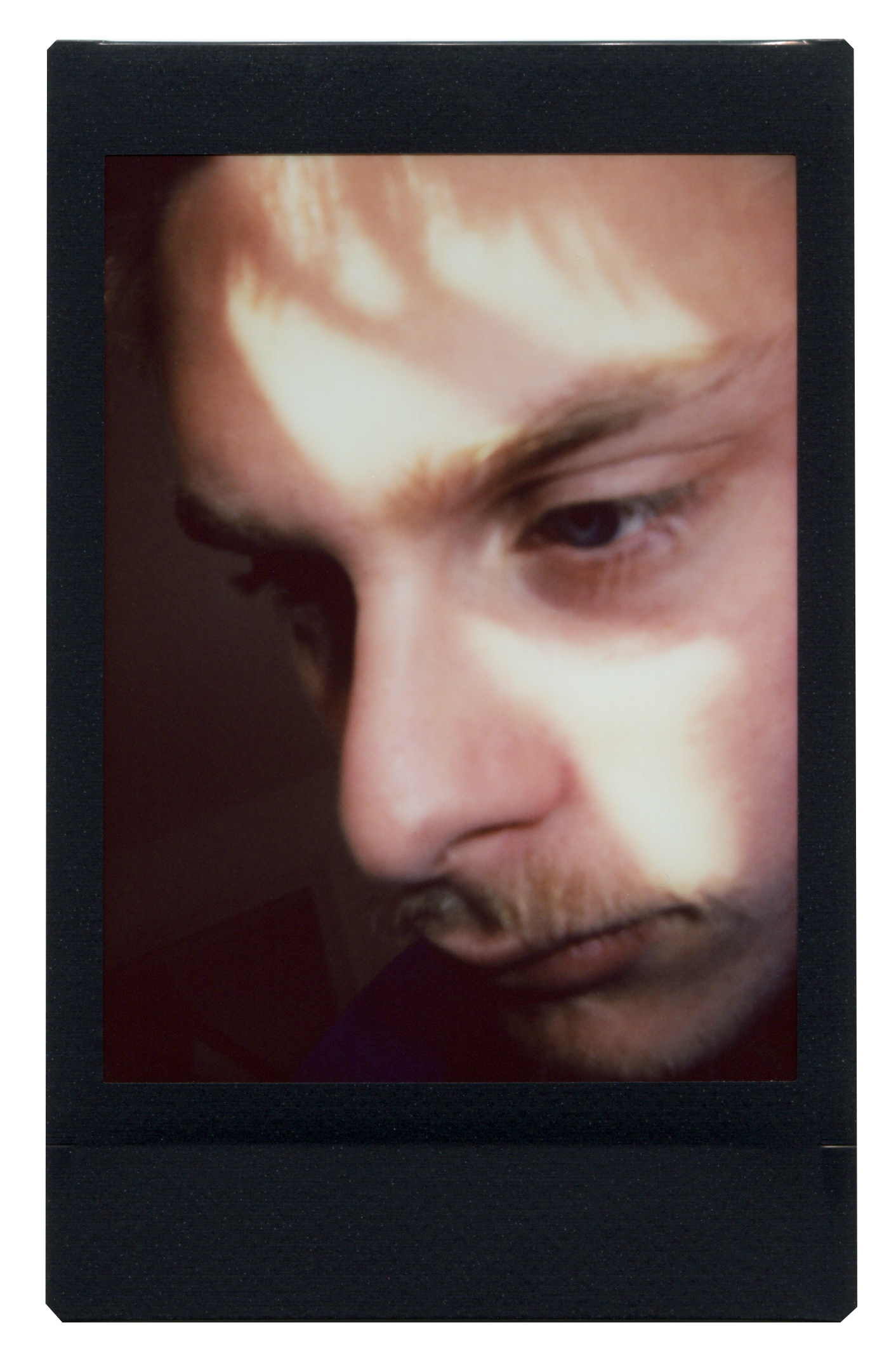



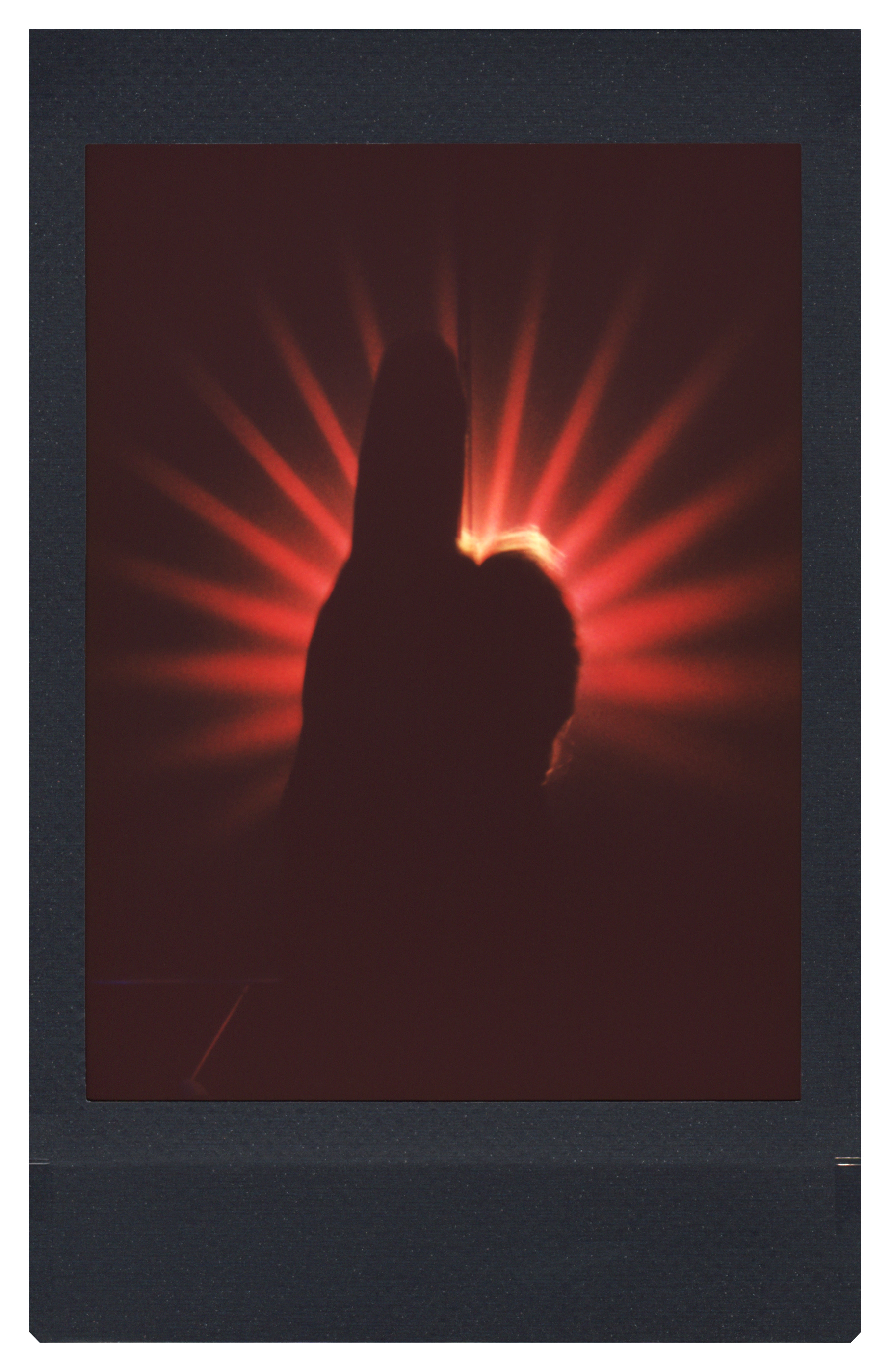
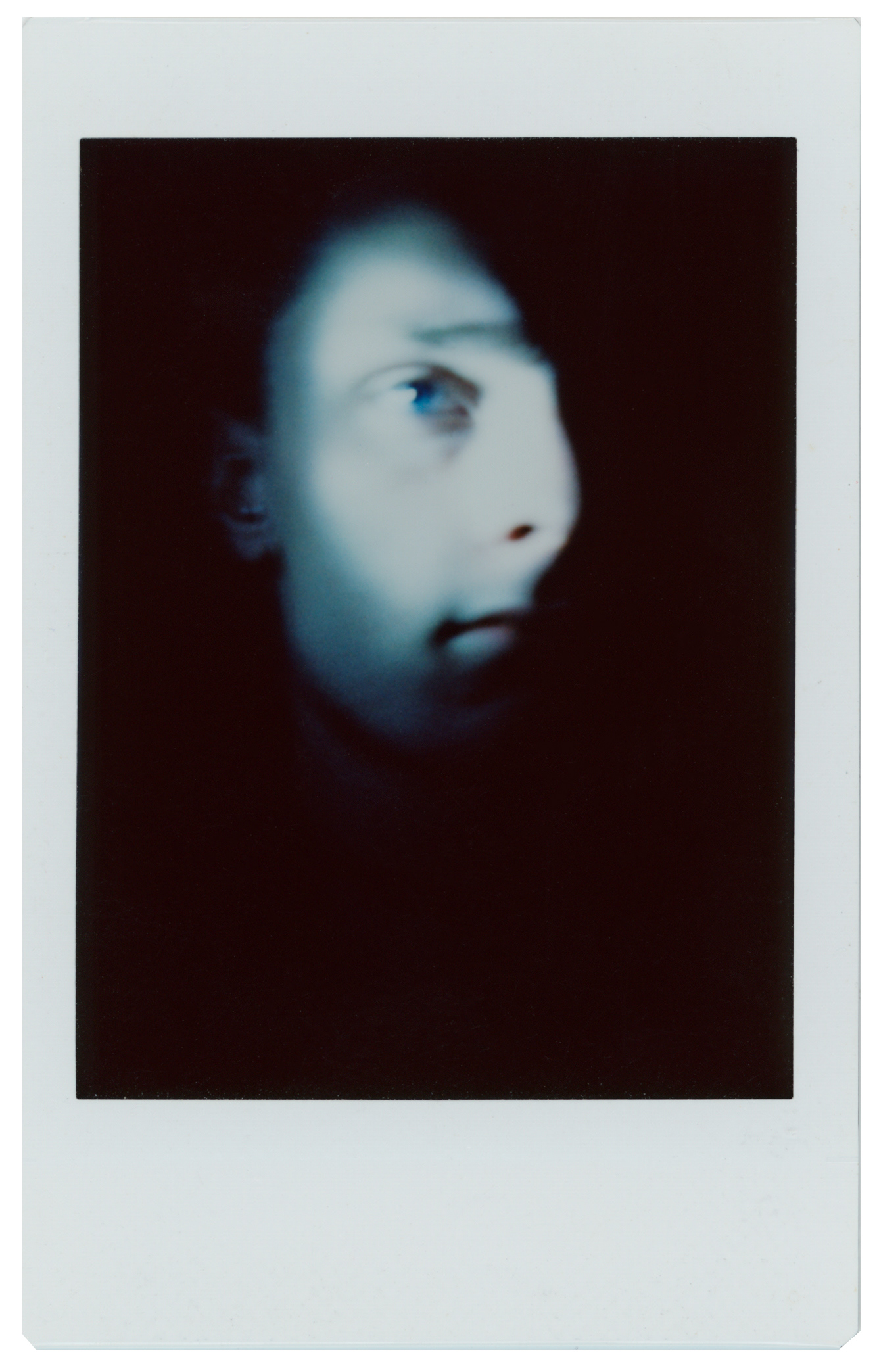
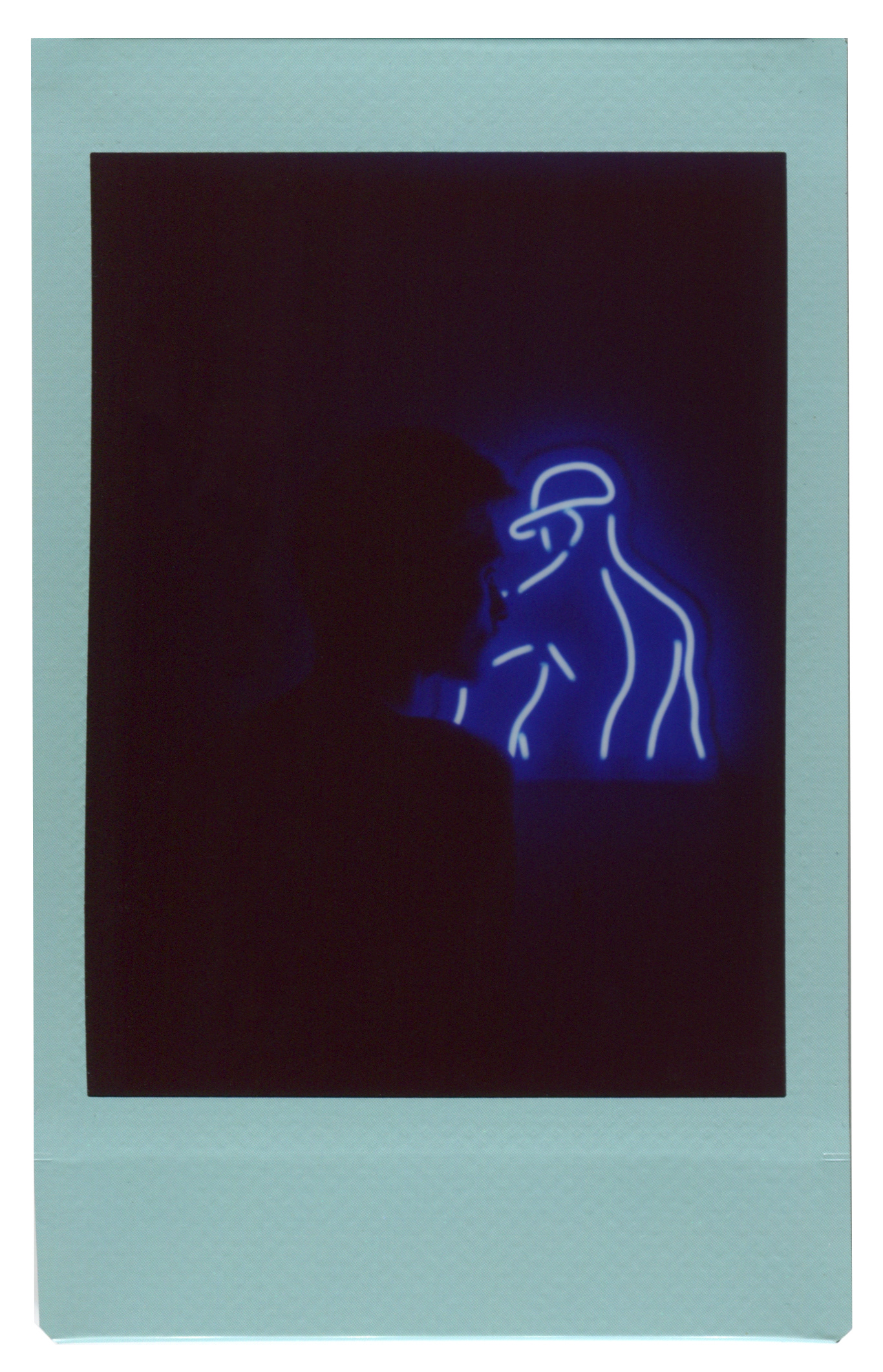
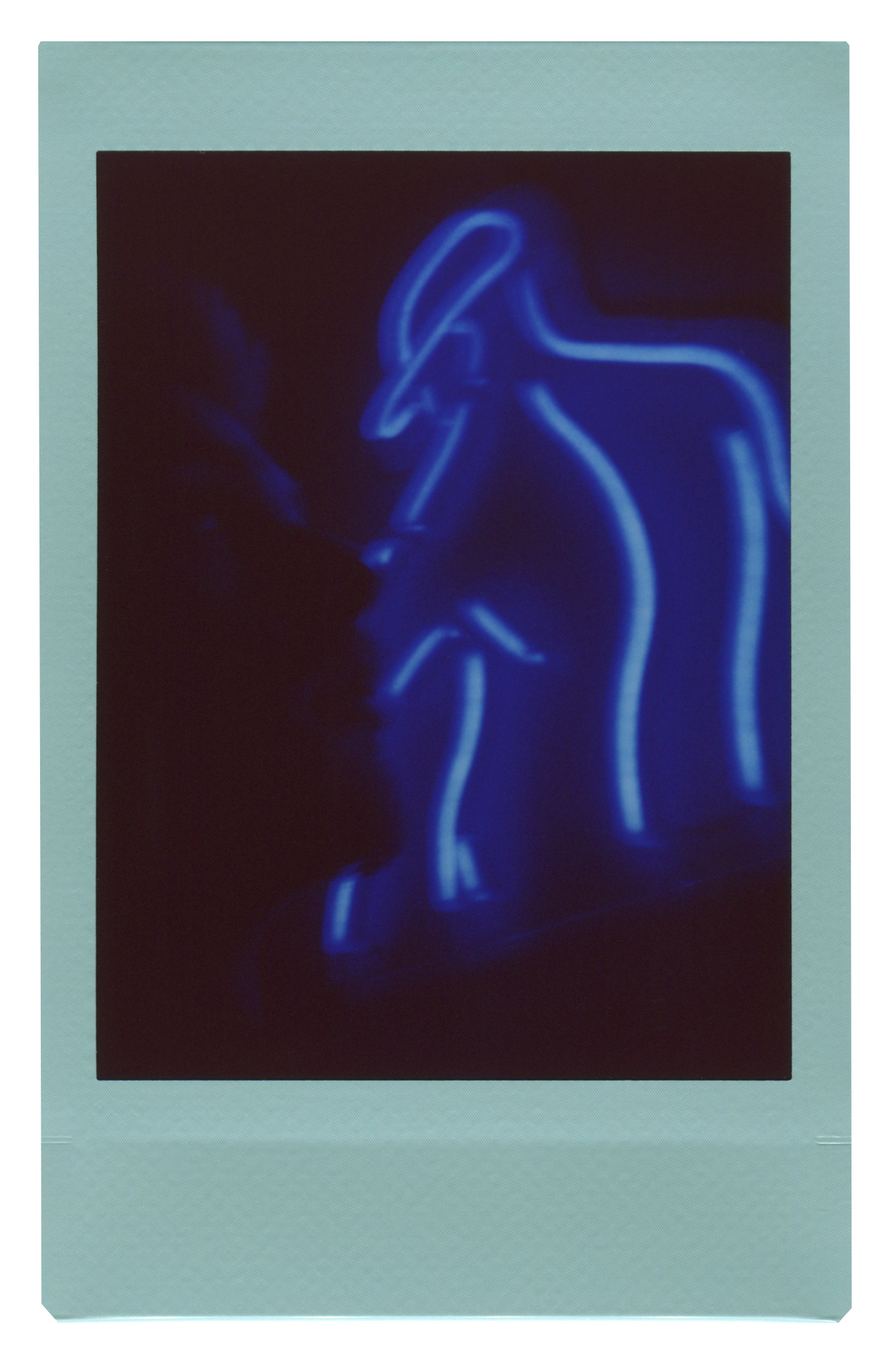
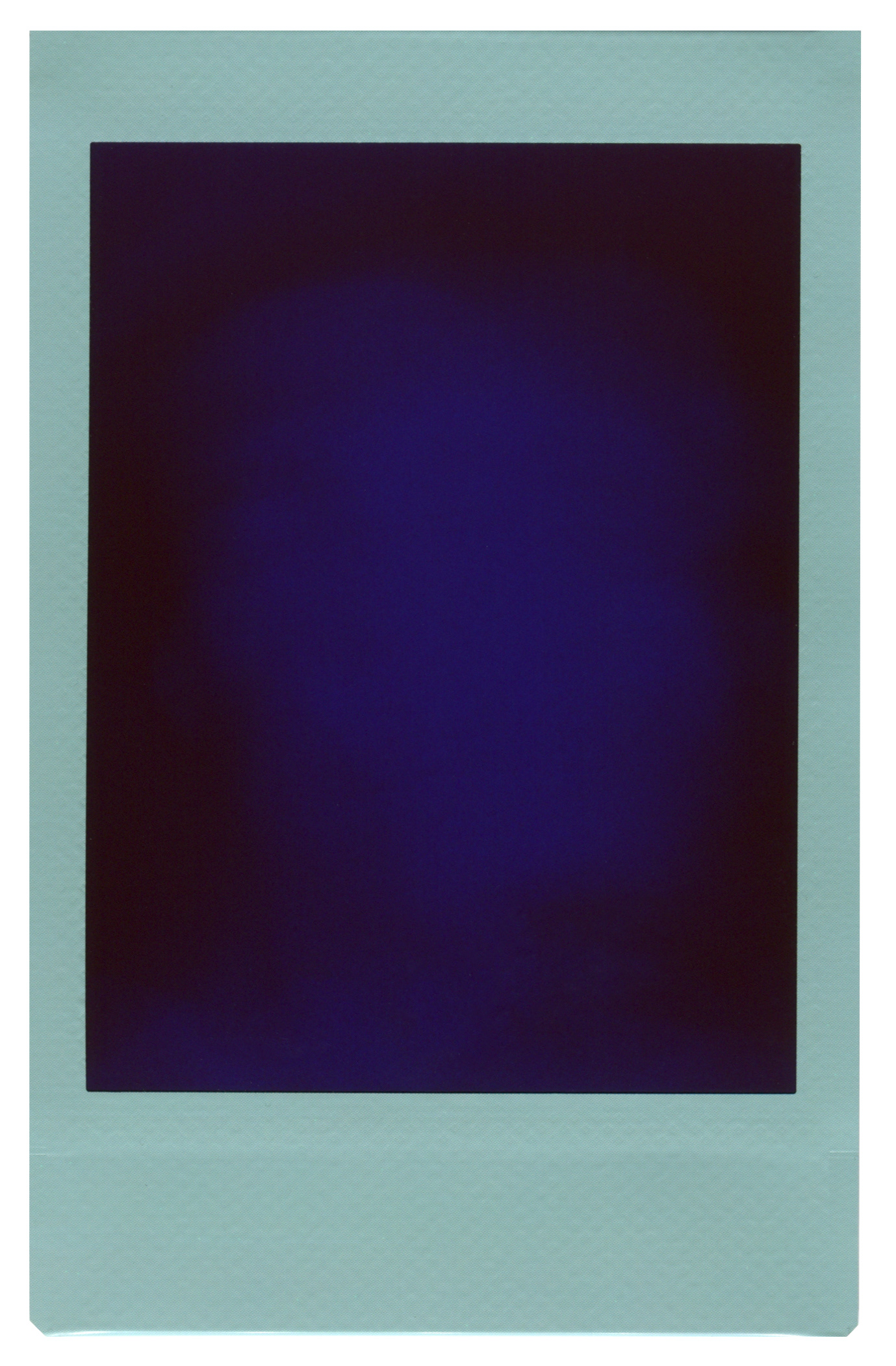
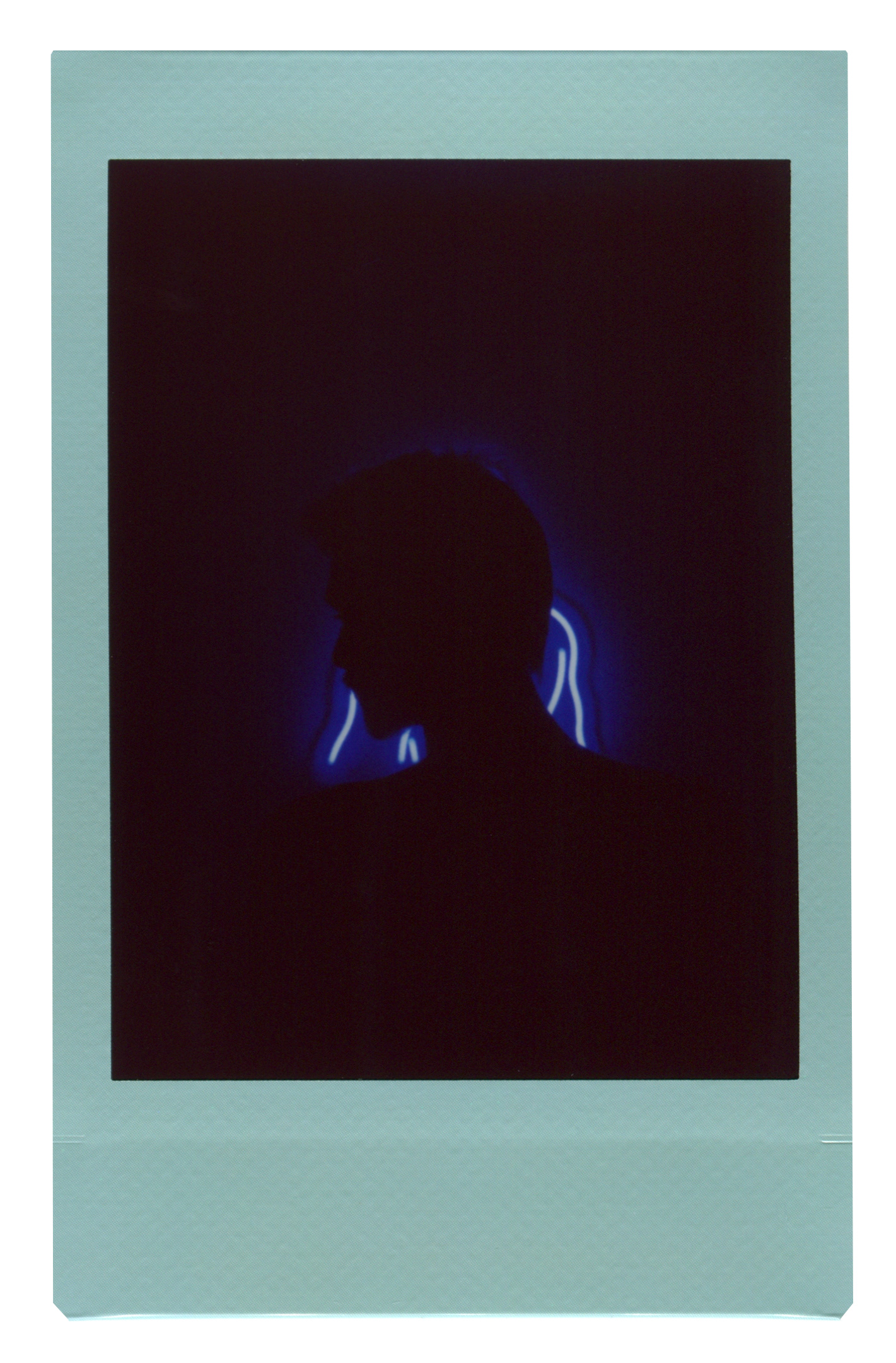
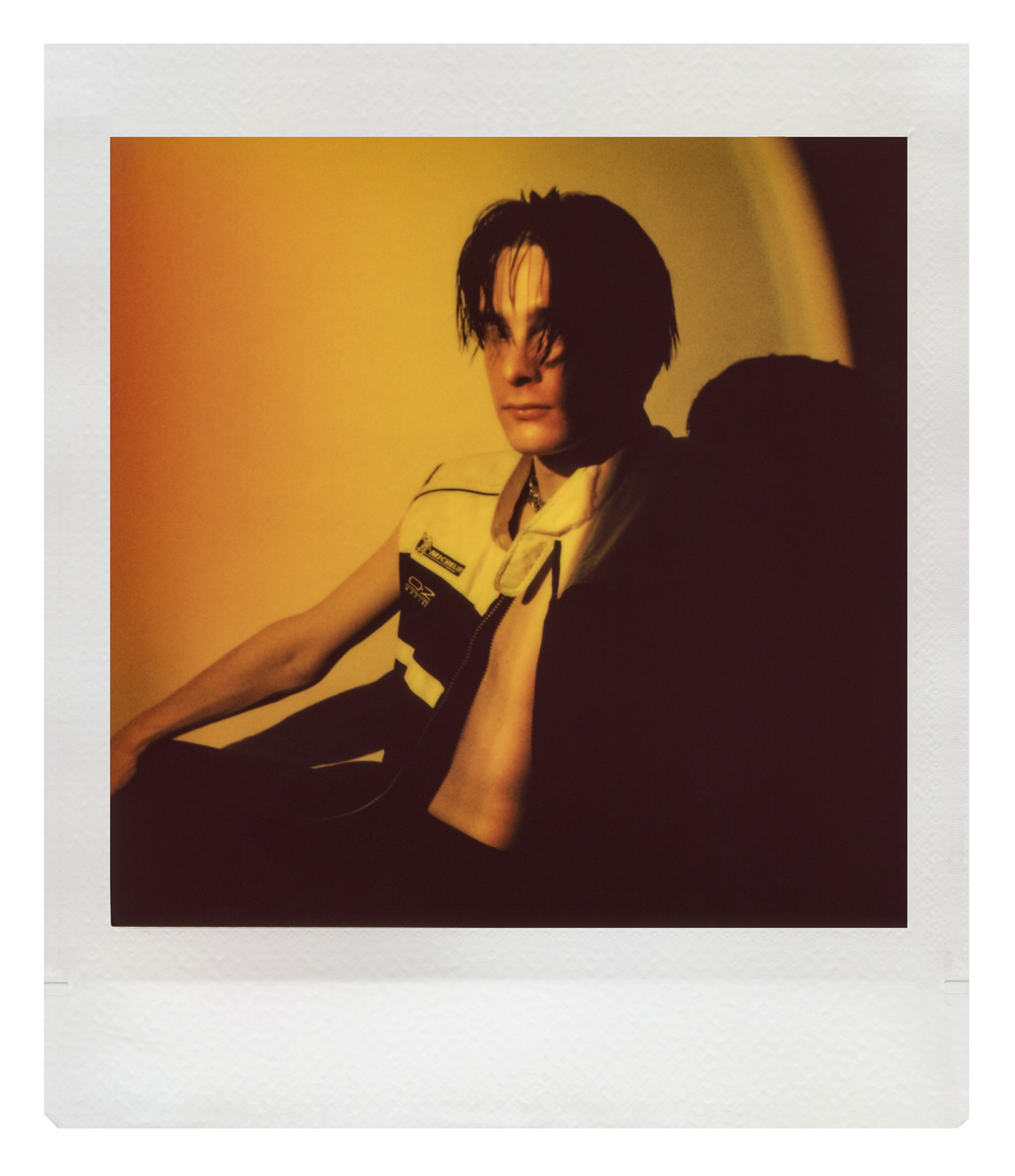


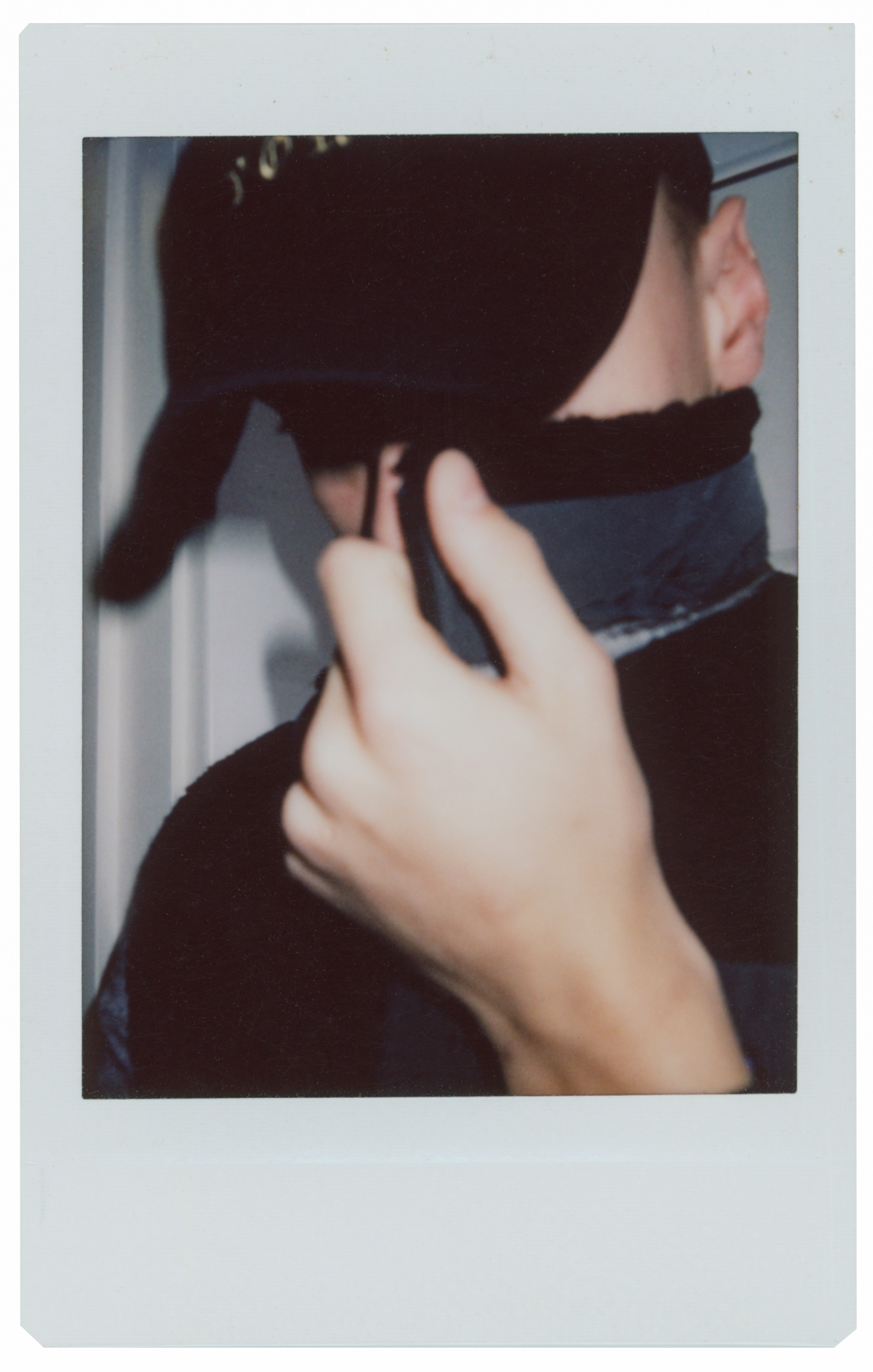




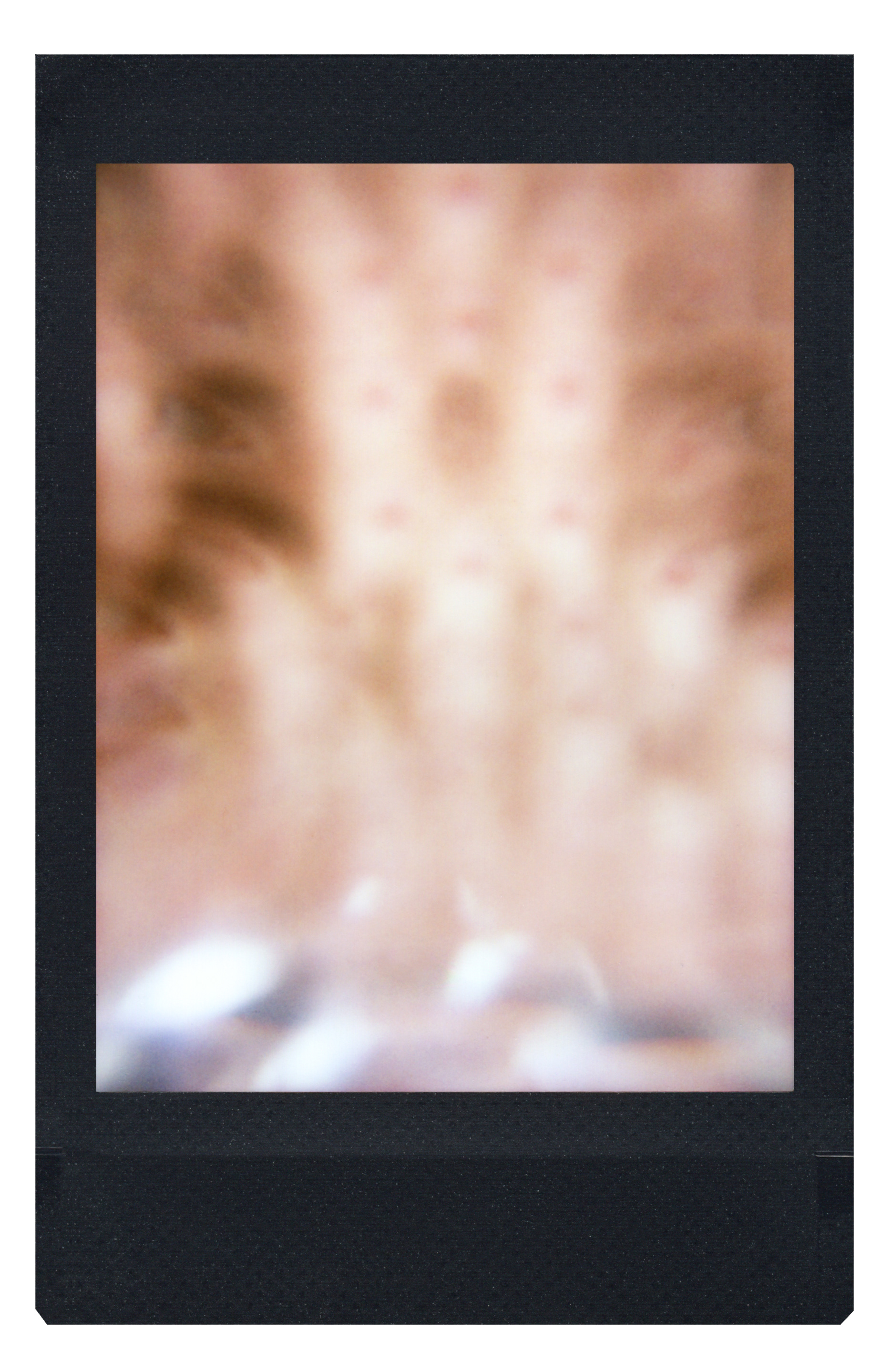
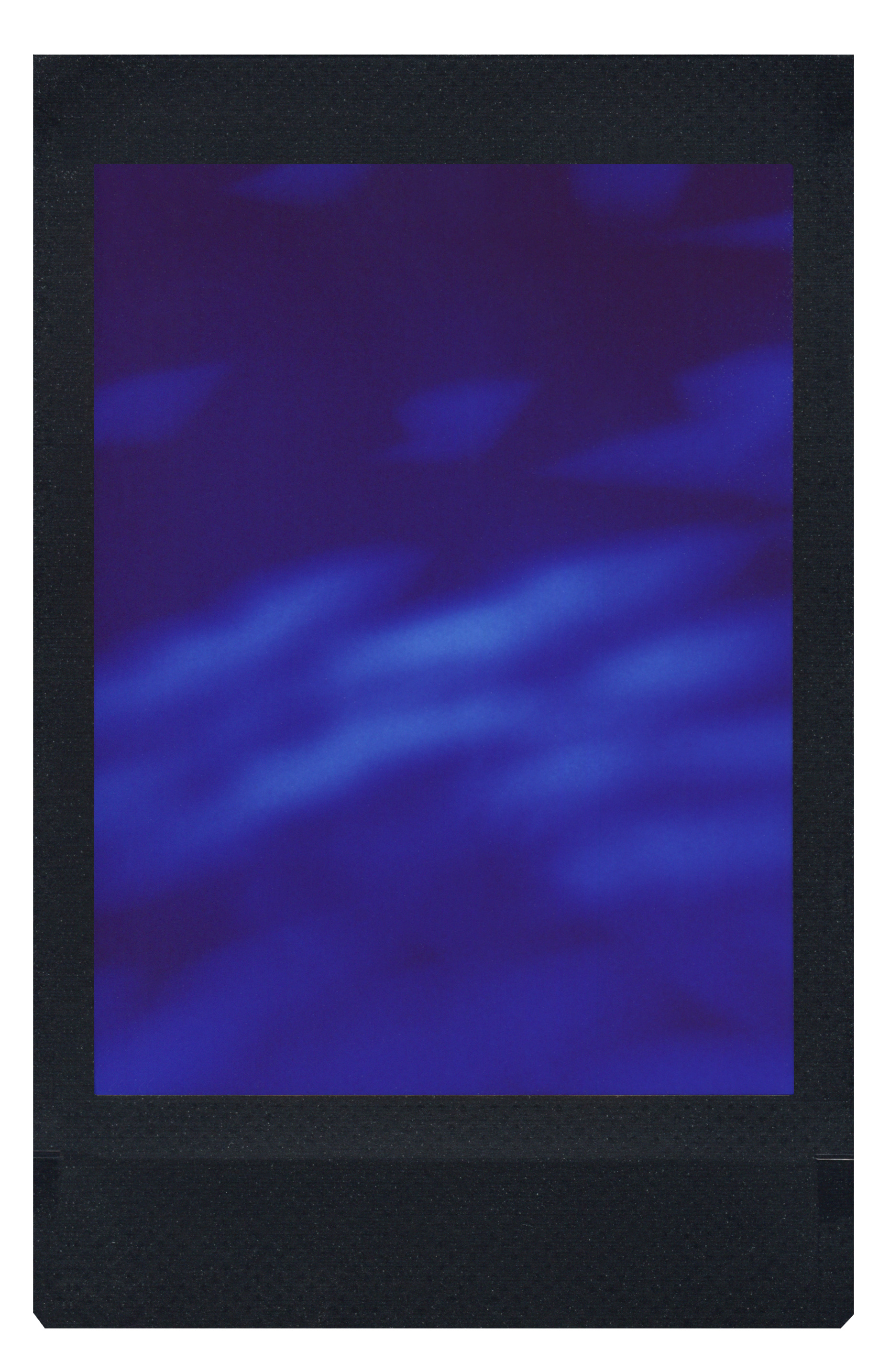
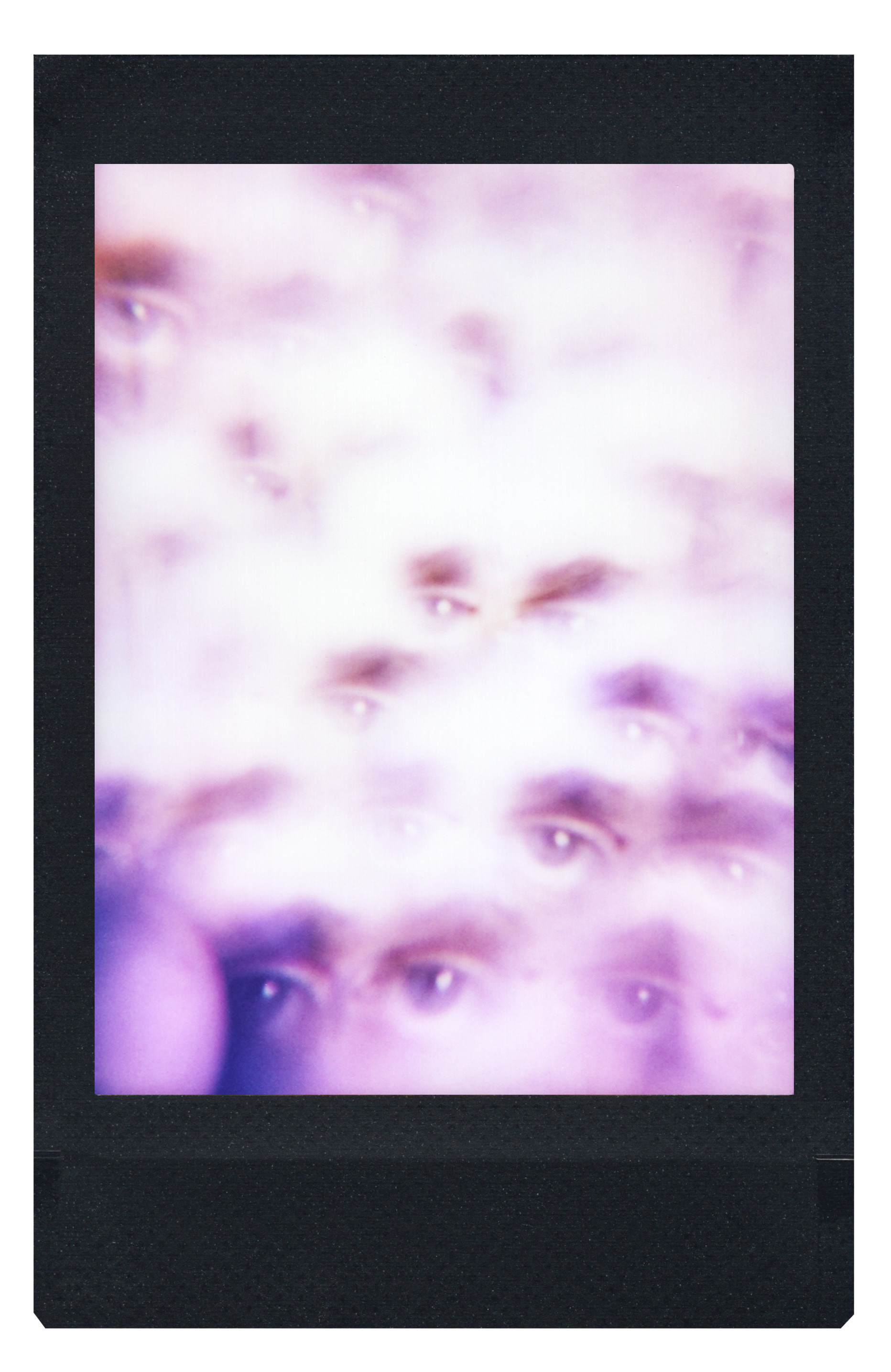
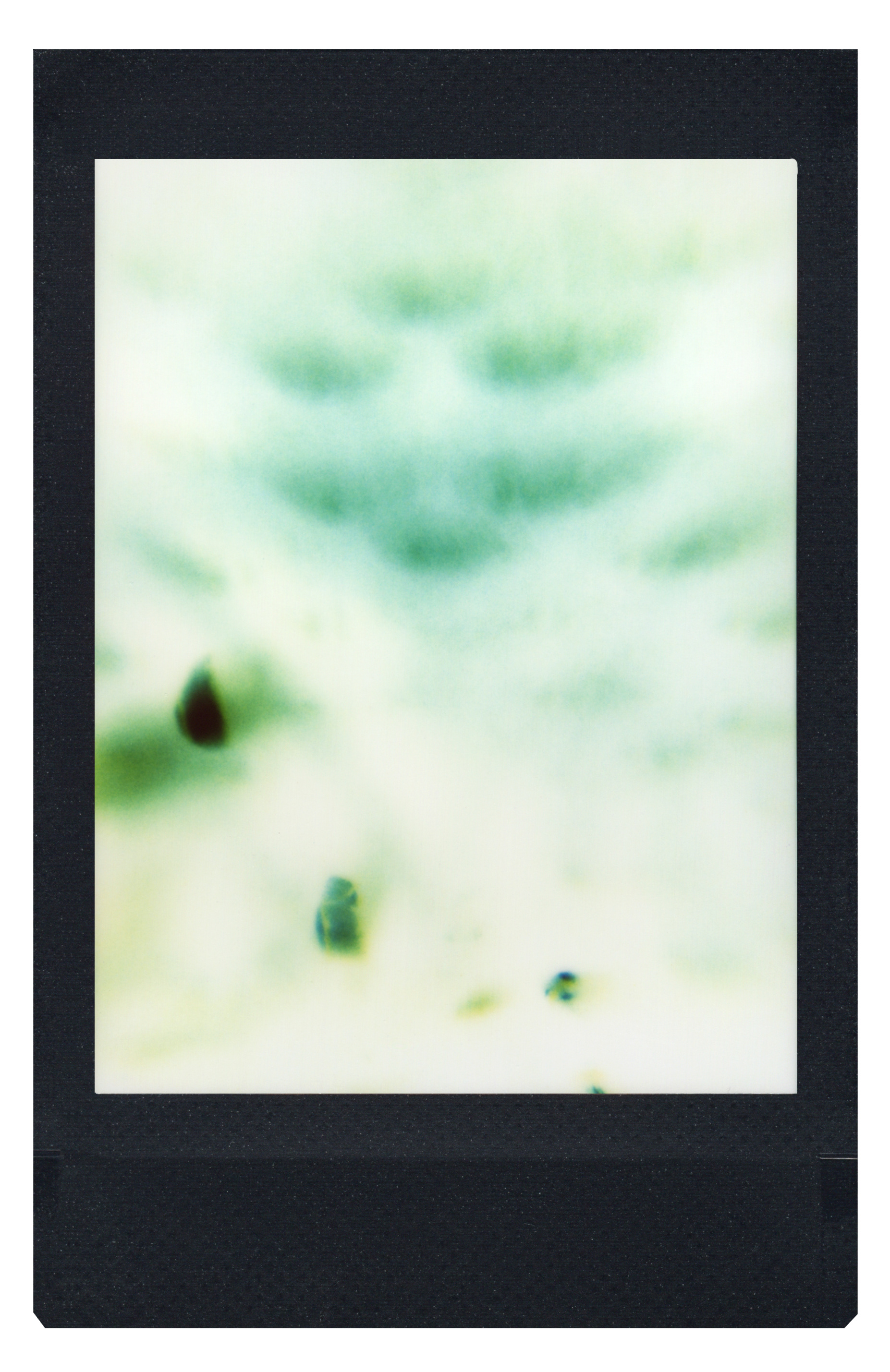
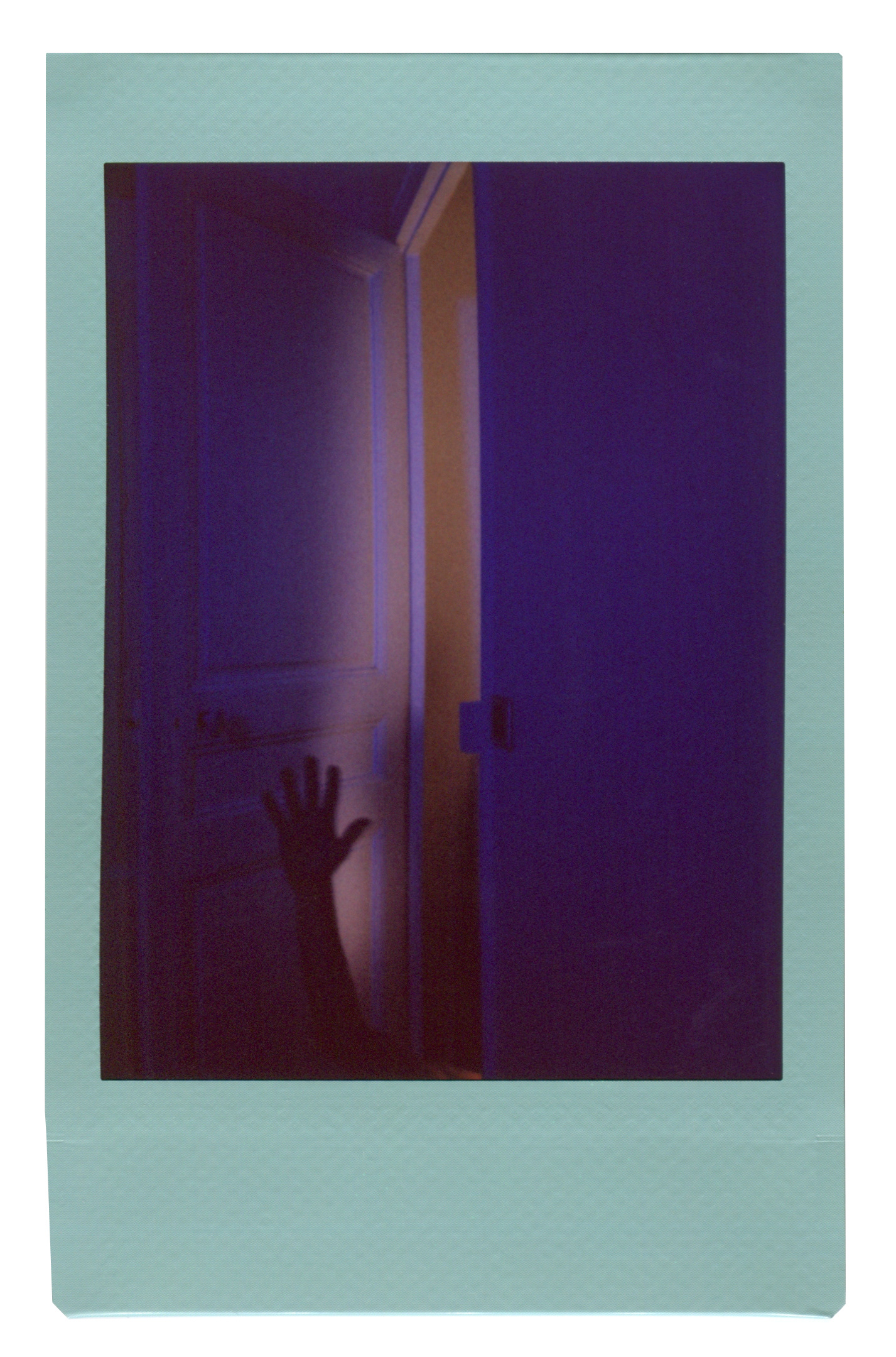


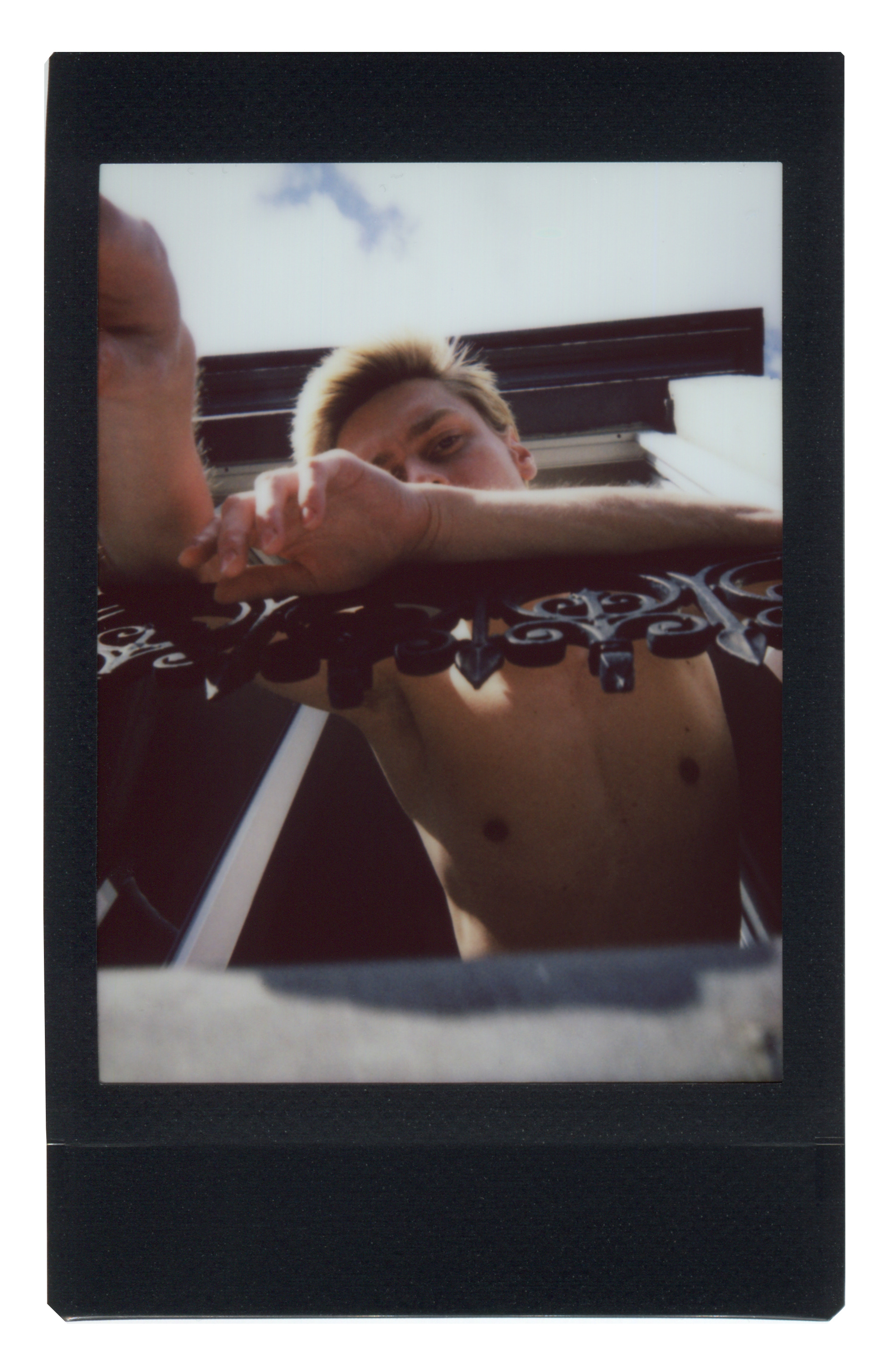
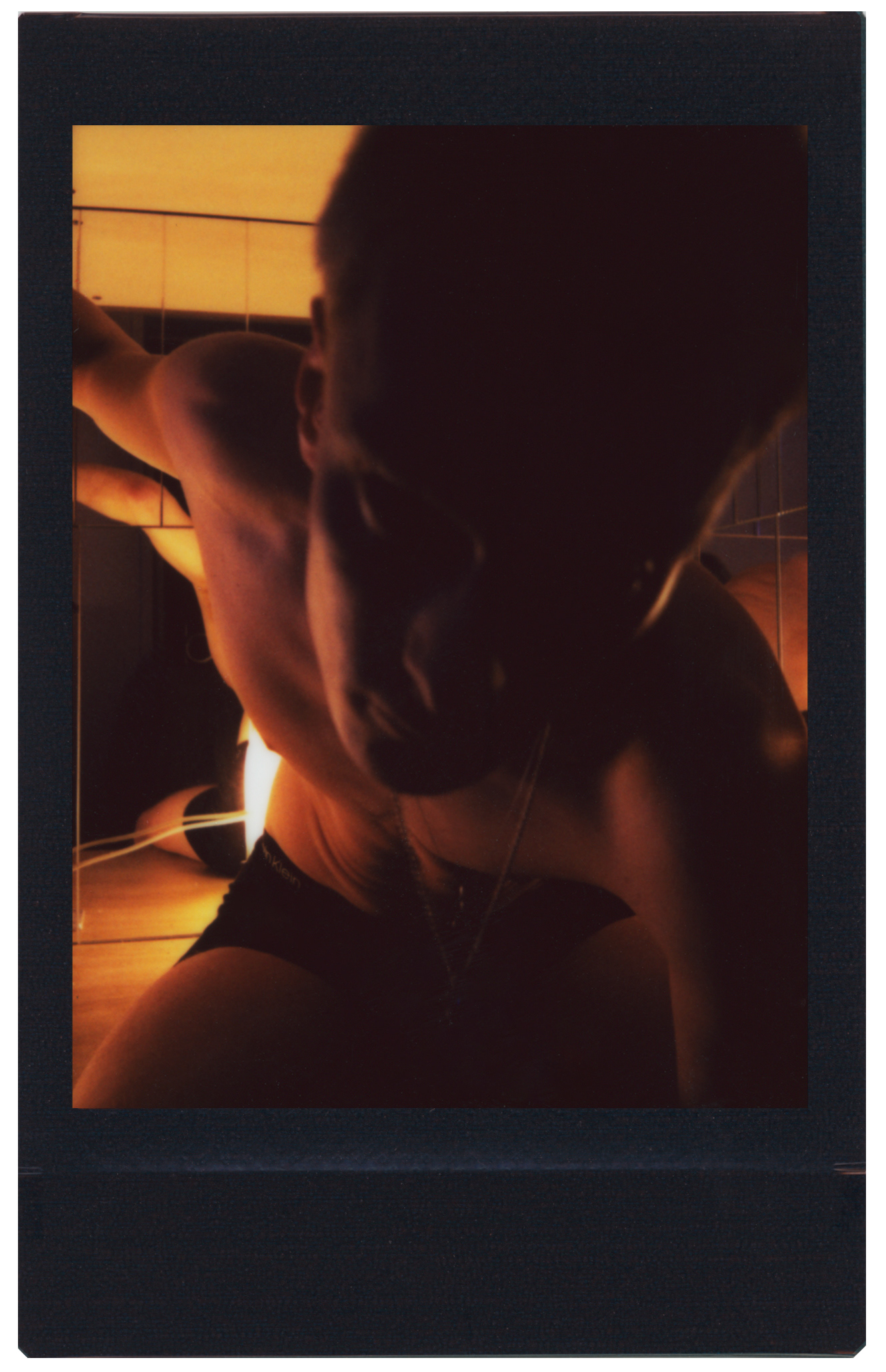
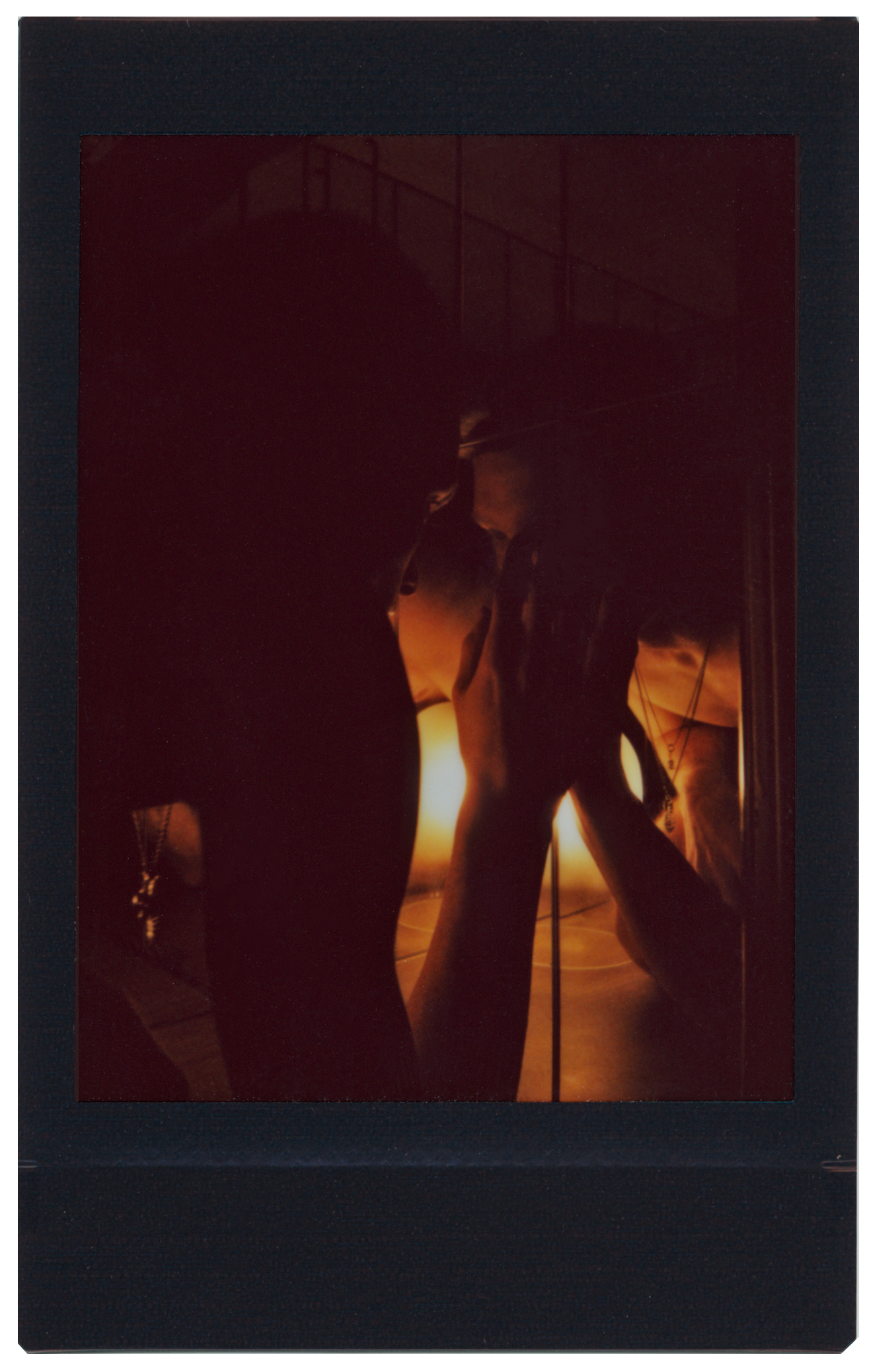

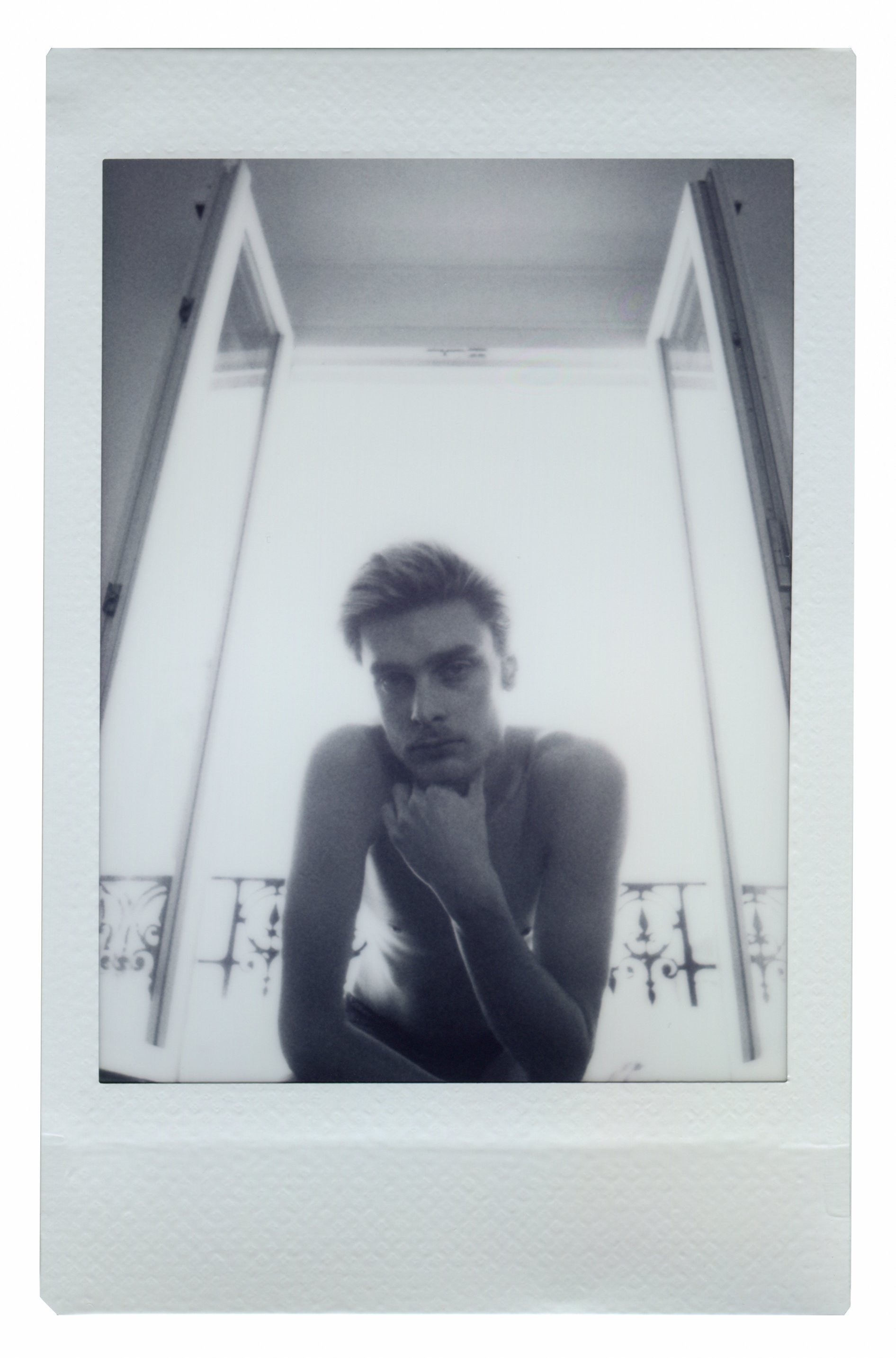
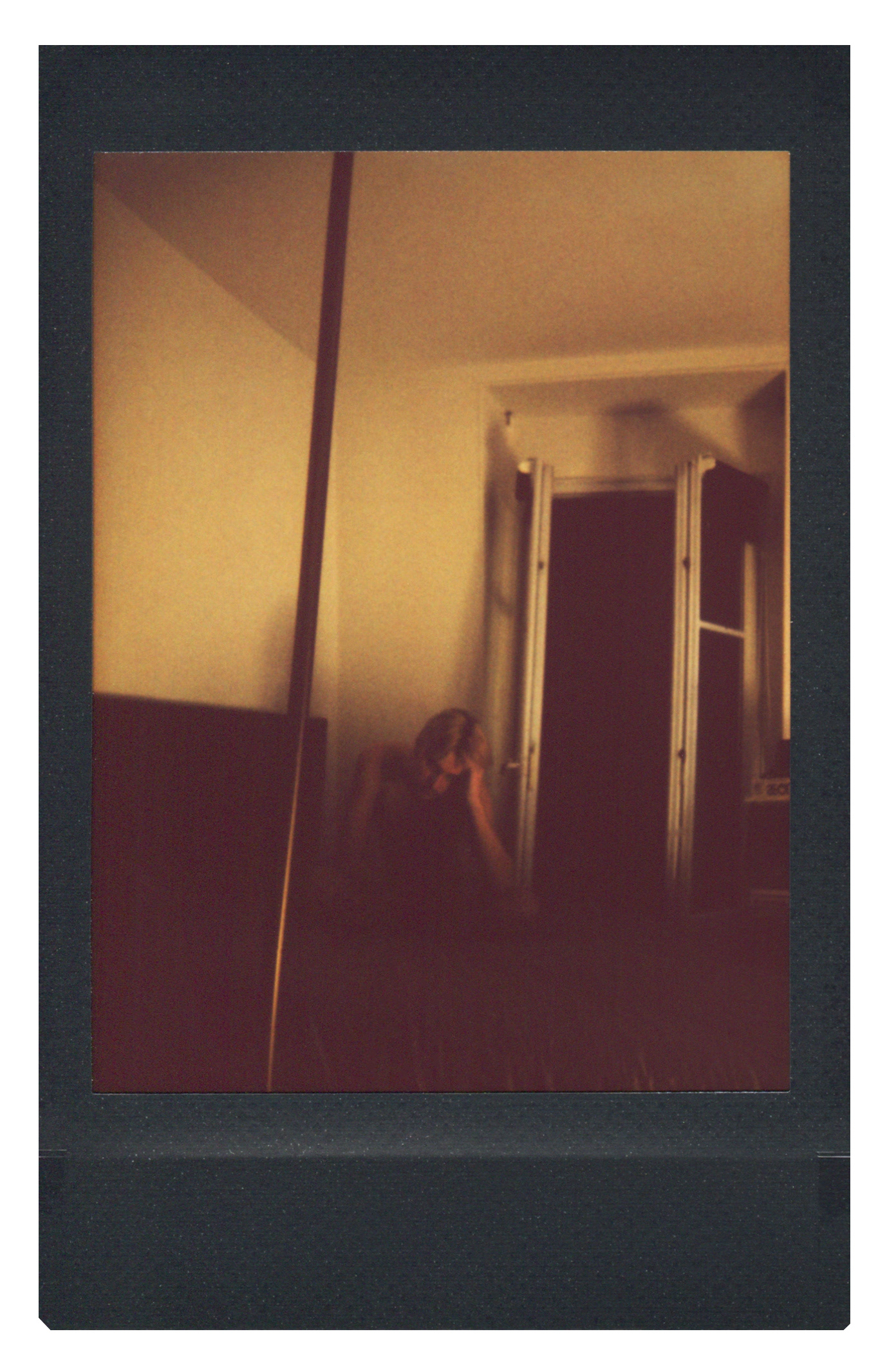
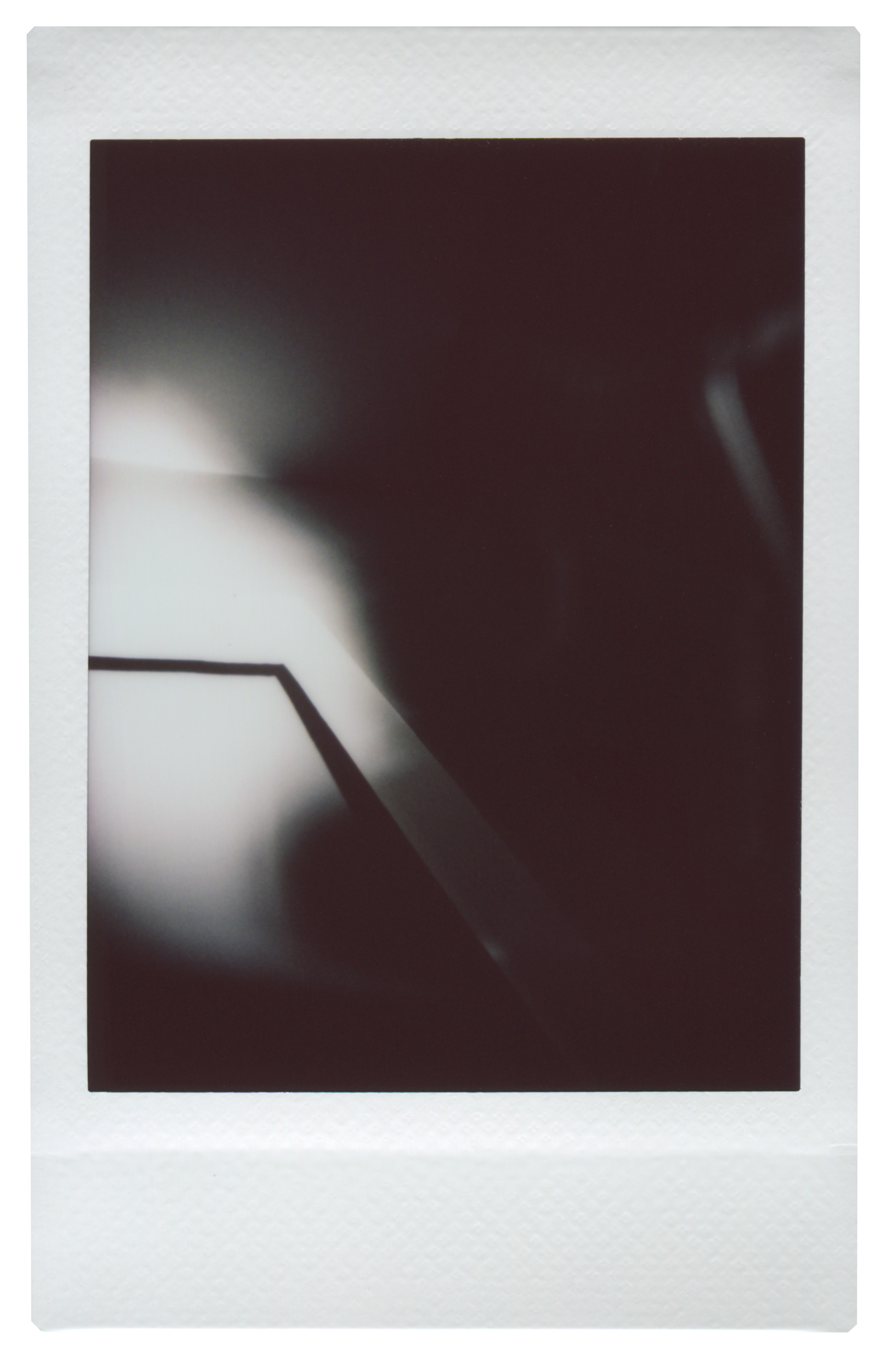
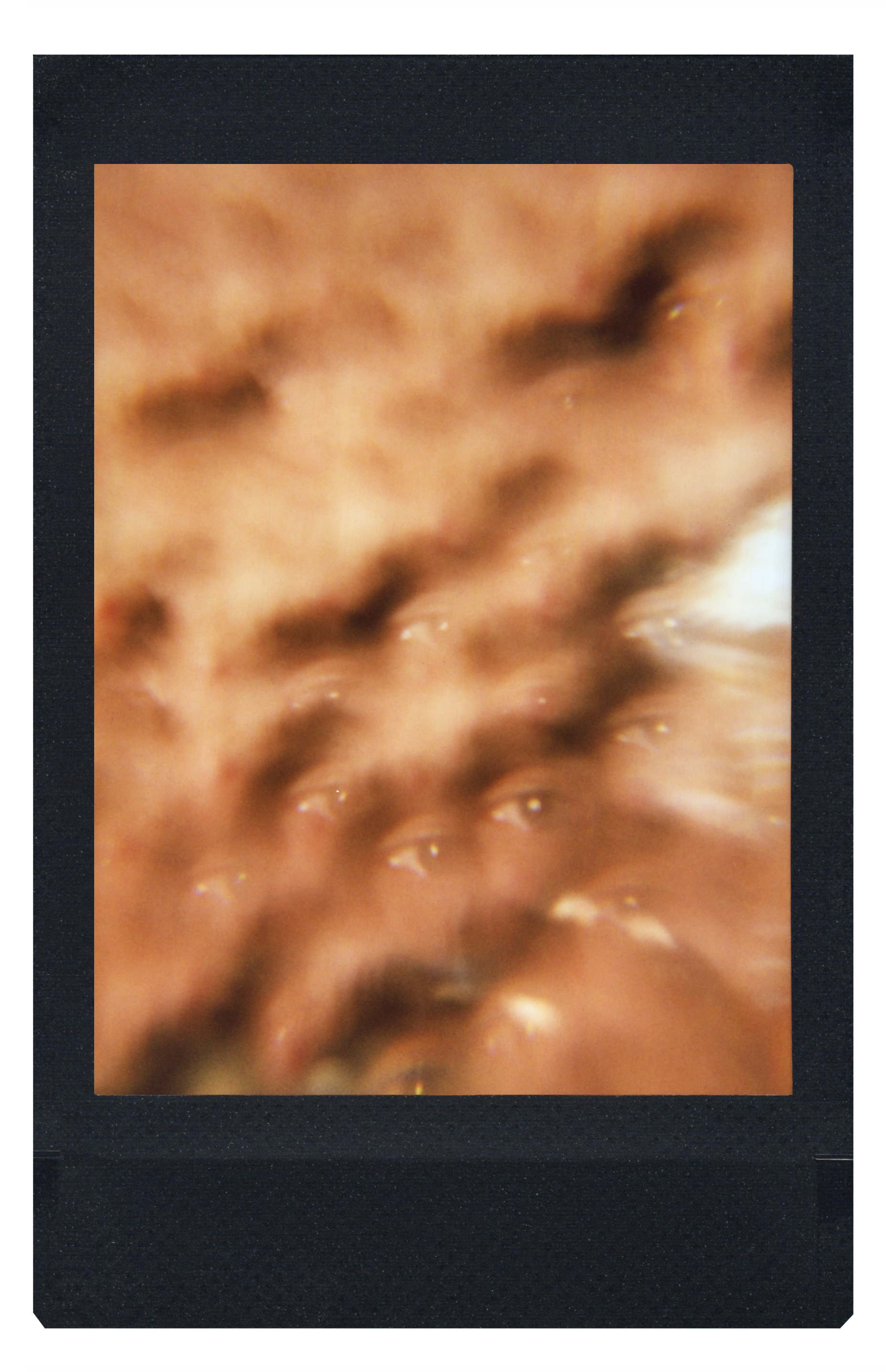

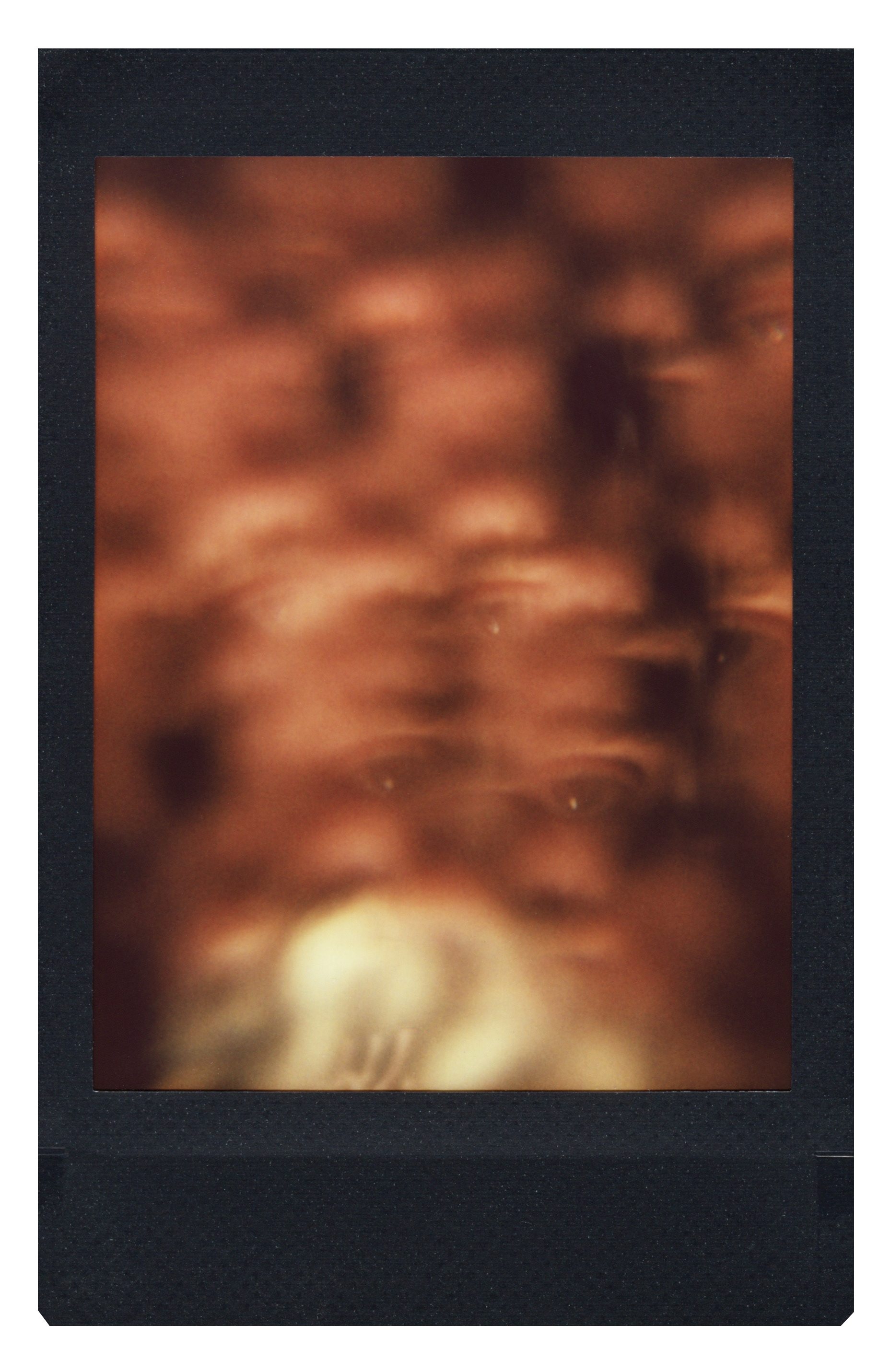
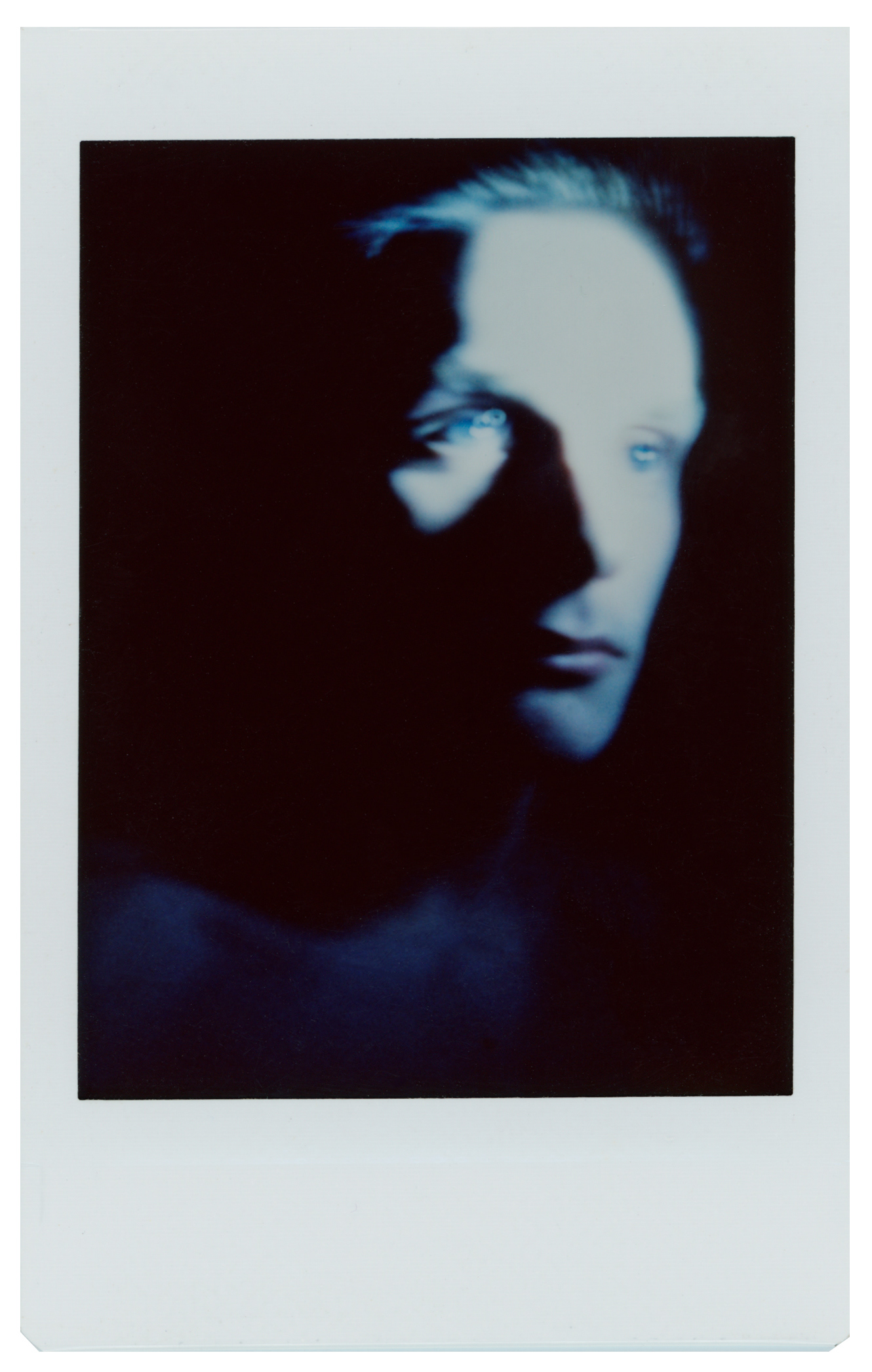


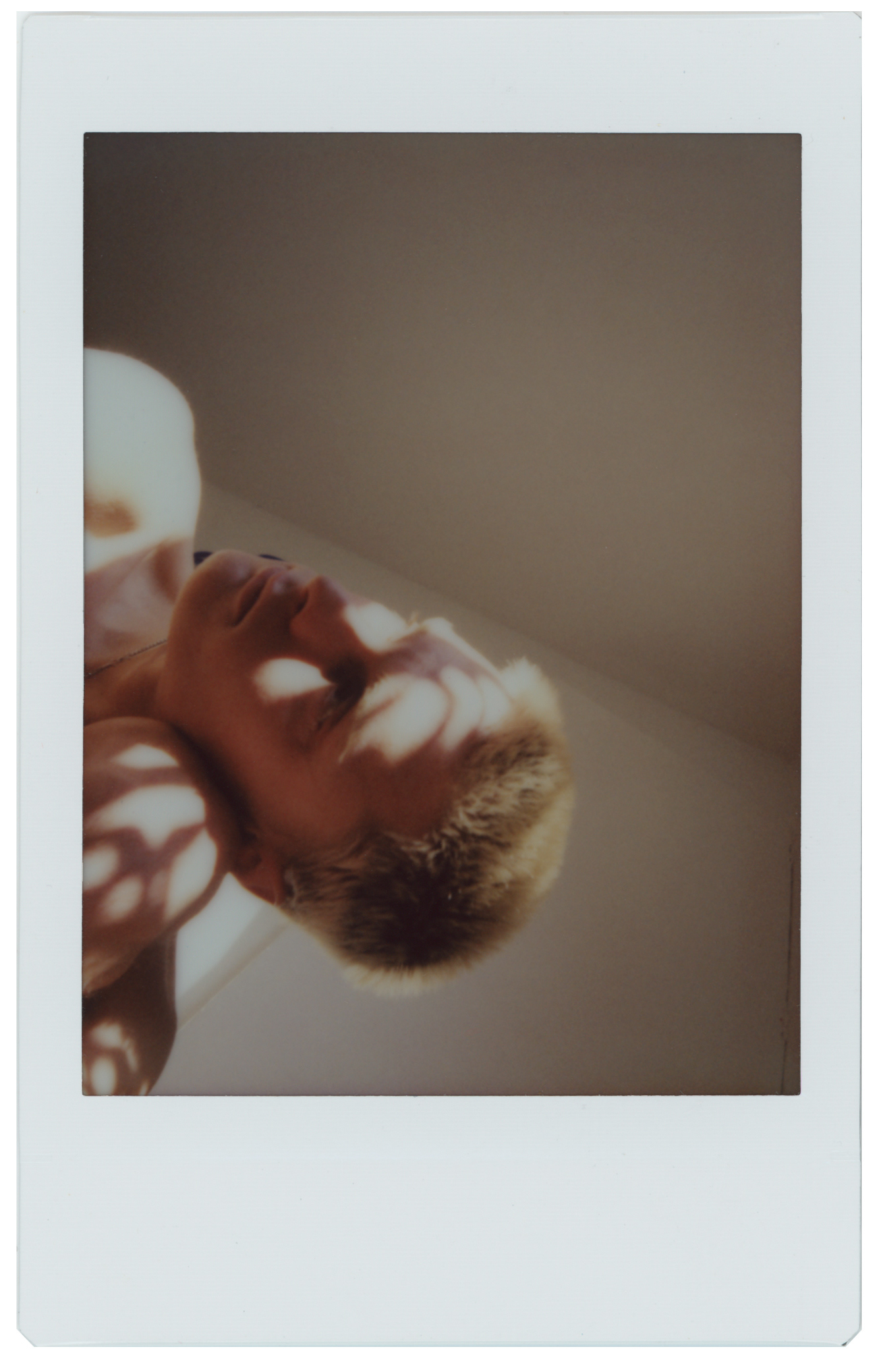
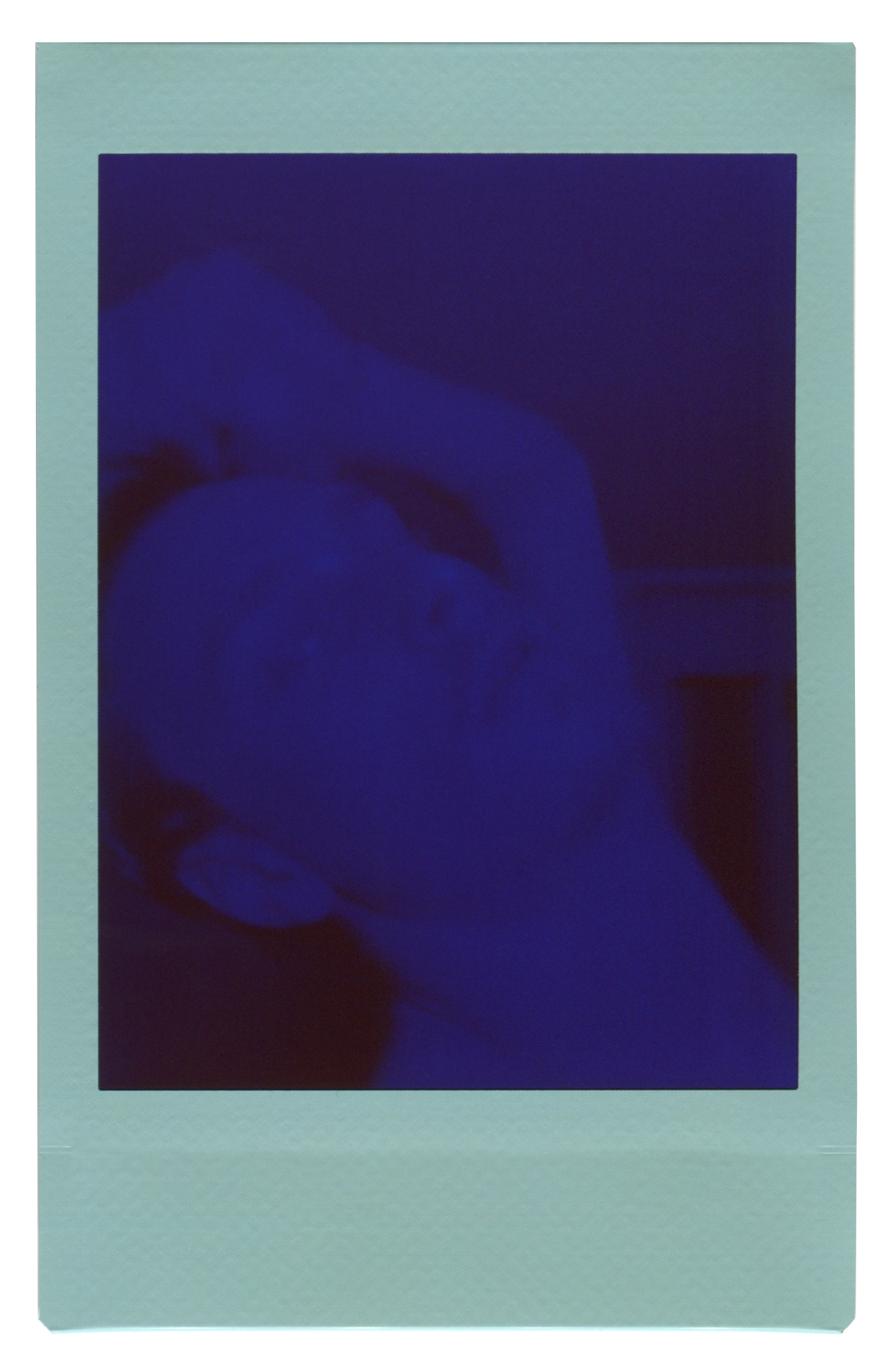
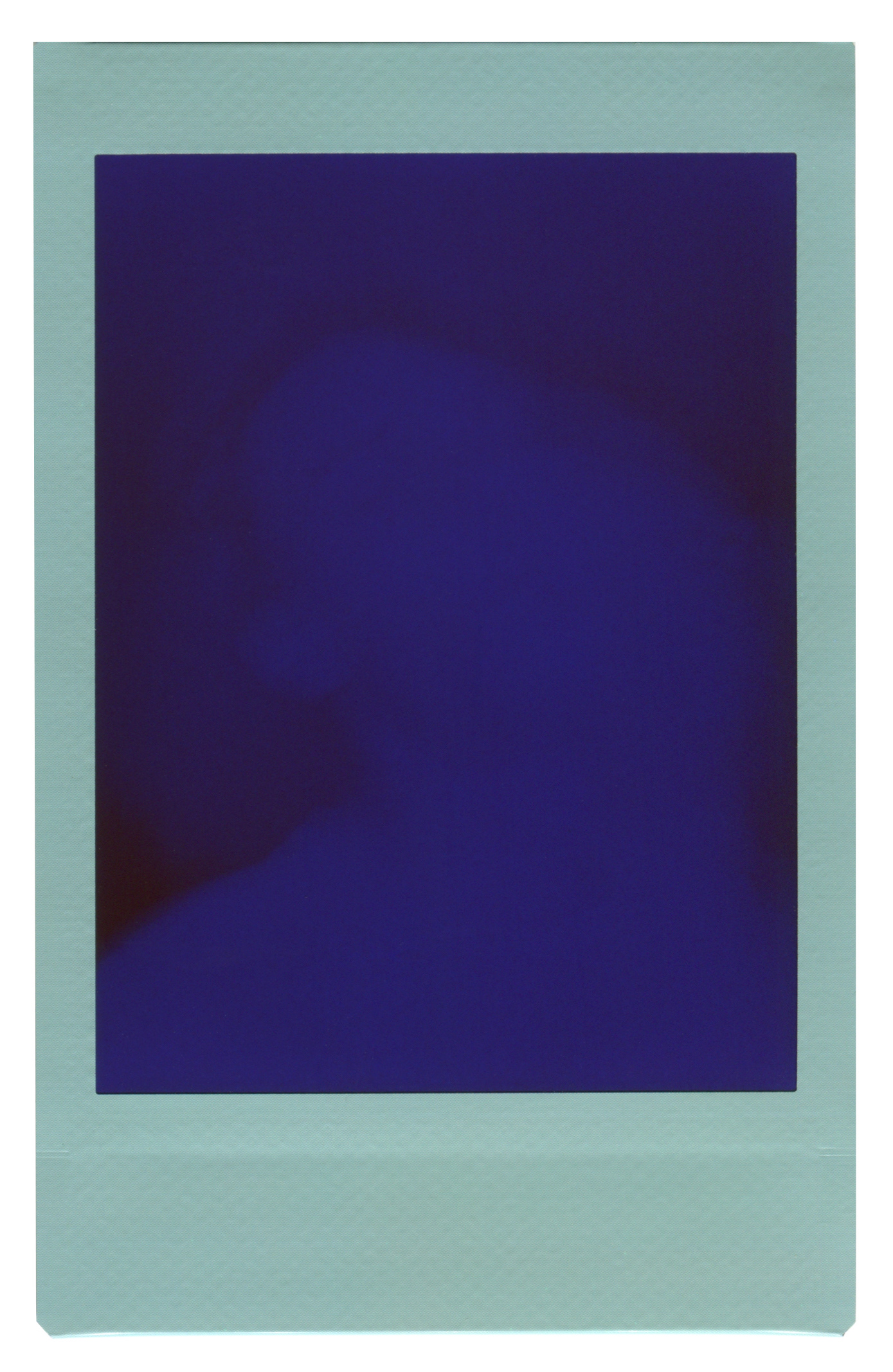
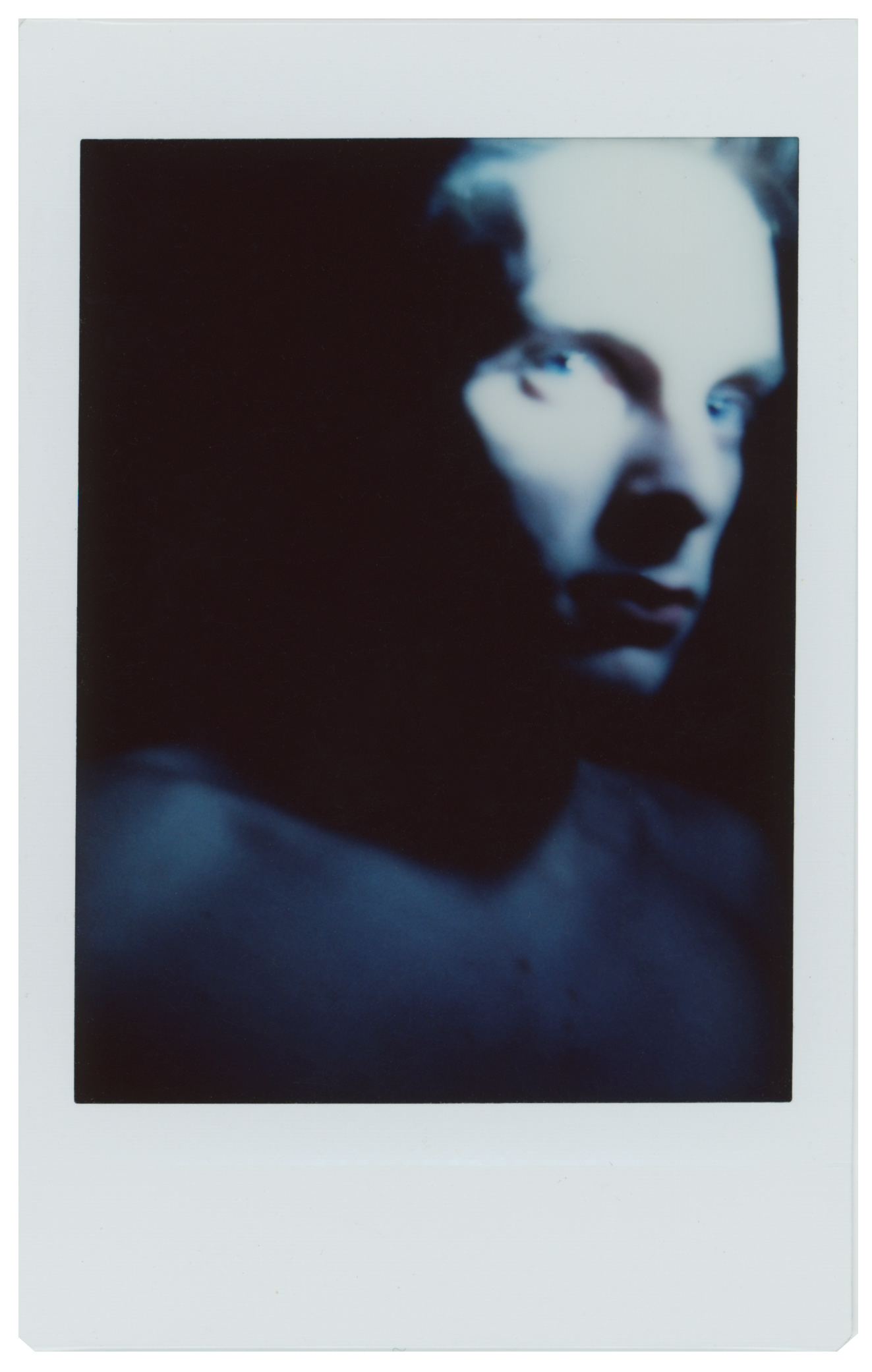

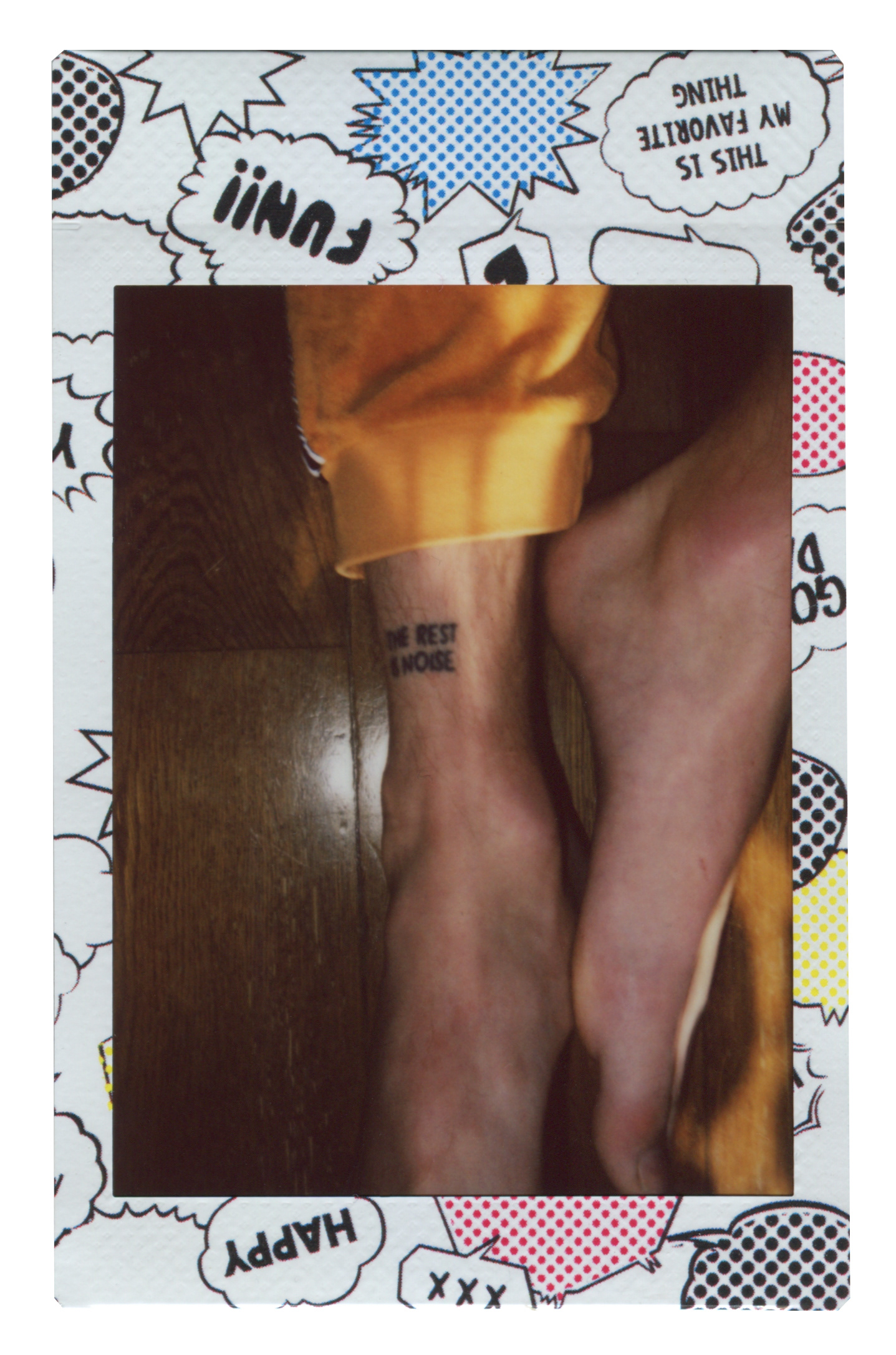
When I first began to learn my way around a camera, polaroid film was a format that allowed me to experiment in real-time. I admired the instant tangibility of the film and my ability to achieve varied lighting techniques and effects through more use of the camera. Without a subject to photograph, I experimented by using myself. With each image and expression, I began to see different stories emerge. By continually modifying the lighting and expression, I found that I could show different sides of myself, my body, and my surroundings.
After a two year break from the work, I returned to reexamine a story I felt was incomplete. With an increased knowledge of the camera and myself, I saw the repetitive process and self-focus of the work, as innately narcissistic, and “Camera Narcissus” was born. As I began to question the narcissistic nature of repetitive self-portraiture I realized my images were perhaps more closely related to a selfless act, as I searched for the dissolution of myself through objects, shapes, and other forms I identified with. I understood this work as both an emotive self-performance by taking on the role of subject and photographer, and a self-dissolution by creating images of ‘myself’ that exist beyond the typical frame of the image and beyond the physical form of my body.